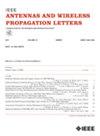具有非凡极化纯度的机器学习辅助微带天线设计
IF 3.7
2区 计算机科学
Q2 ENGINEERING, ELECTRICAL & ELECTRONIC
引用次数: 0
摘要
成功地探索出了一种高极化纯度的微带天线。据我们所知,这是第一次这样做,并声称具有双重新颖性:基于全面的科学分析和使用机器学习辅助的全局天线优化方法,逐步发展复杂多单元缺陷地面几何(DGG),特别是并行代理模型辅助的天线综合混合差分进化(PSADEA)算法,该算法通常比流行的全局优化技术快十倍以上,同时获得更好的结果。考虑到多种性能,它们产生了高度优化的解决方案,即在正交(H-)和对角线(D-)平面上同时减少交叉极化(XP)辐射,保持初级增益不受影响。在C波段制备了不同的贴片和阵列,对所提出的DGG进行了令人满意的测试。通常情况下,7.5 dBi至8.0 dBi的峰值增益已得到保证,同时整个辐射平面上的XP水平提高了13 dB至18 dB。相同的DGG上的4元阵列保证在整个方位角平面上具有超过40 dB的co-to-XP隔离。本文章由计算机程序翻译,如有差异,请以英文原文为准。
Machine Learning-Assisted Microstrip Antenna Design Featuring Extraordinary Polarization Purity
A high degree of polarization purity for microstrip antennas has been successfully explored. This, to the best of our knowledge, is the first of its kind and claims a twofold novelty: a stepwise development of complex multiunit defected ground geometry (DGG) based on a thorough scientific analysis and use of a machine learning-assisted global antenna optimization method, particularly, the parallel surrogate model-assisted hybrid differential evolution for antenna synthesis (PSADEA) algorithm, which is often more than ten times faster than popular global optimization techniques, while obtaining superior results. They result in highly optimal solutions considering multiple performances, i.e., reduction in cross-polarization (XP) radiations simultaneously over orthogonal (H-) and diagonal (D-) planes maintaining the primary gain unaffected. The proposed DGG has been satisfactorily tested with different patches and arrays fabricated in C band. Typically, 7.5 dBi to 8.0 dBi peak gain has been ensured along with 13 dB to 18 dB improvement in XP level over entire radiation planes. A 4-element array on an identical DGG promises over 40 dB co-to-XP isolation over the entire azimuth planes.
求助全文
通过发布文献求助,成功后即可免费获取论文全文。
去求助
来源期刊
CiteScore
8.00
自引率
9.50%
发文量
529
审稿时长
1.0 months
期刊介绍:
IEEE Antennas and Wireless Propagation Letters (AWP Letters) is devoted to the rapid electronic publication of short manuscripts in the technical areas of Antennas and Wireless Propagation. These are areas of competence for the IEEE Antennas and Propagation Society (AP-S). AWPL aims to be one of the "fastest" journals among IEEE publications. This means that for papers that are eventually accepted, it is intended that an author may expect his or her paper to appear in IEEE Xplore, on average, around two months after submission.

 求助内容:
求助内容: 应助结果提醒方式:
应助结果提醒方式:


